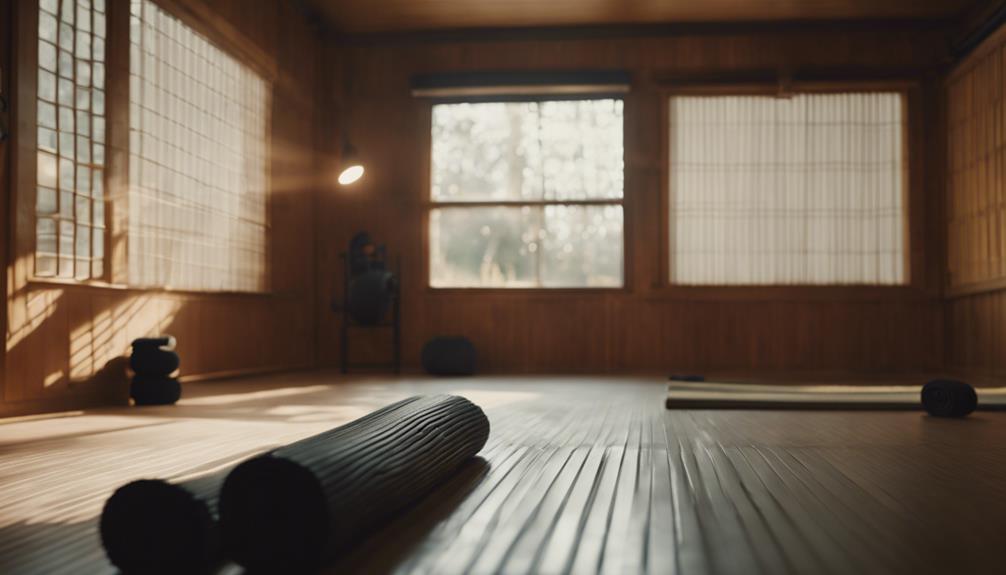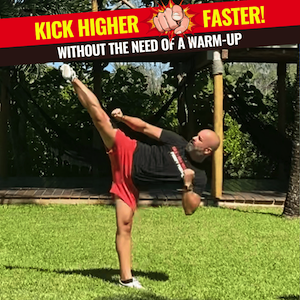As you continue training in martial arts after 40, you'll need to adapt your approach to prevent injuries. Prioritize proper stances and technique over power to reduce joint strain, and incorporate low-impact training options like Aikido and modified Jiu Jitsu. Integrate resistance training to maintain muscle strength and joint health, and focus on flexibility exercises like yoga and dynamic stretching. By shifting your training approach to emphasize smarter, longer sessions, you'll reduce your risk of injury. As you refine your strategy, you'll discover the importance of conditioning, safety precautions, and recovery methods tailored to your aging body.
Age-Related Injury Prevention Strategies
As you enter your 40s, prioritizing joint preservation becomes increasingly essential in your martial arts training. Your body's recovery and healing processes slow down with age, making you more prone to injuries. To mitigate this risk, focus on maintaining proper stances and emphasizing technique over power. This subtle shift in approach markedly reduces the strain on your joints, allowing you to train smarter and longer.
Incorporating low-impact training options into your routine is another effective strategy. Disciplines like Aikido and modified Jiu Jitsu enable you to build skills without exposing yourself to the high-impact techniques that can lead to injuries.
When you do train, make sure to start with a thorough warm-up routine, including at least 15 minutes of dynamic stretching. This prepares your muscles for physical activity and helps prevent stiffness.
Conditioning Exercises for Injury Prevention
You can greatly reduce your risk of injury in martial arts training by incorporating conditioning exercises into your routine. As you age, maintaining muscle strength through resistance training becomes essential for joint preservation.
Focus on exercises that work multiple muscle groups at once, such as squats and lunges, to build overall strength and stability. Core conditioning exercises, like planks and bridges, enhance stability and support for your spine and joints, reducing the risk of injuries during training.
Incorporate flexibility exercises, including dynamic stretching and yoga, to improve joint mobility and decrease stiffness. Regular warm-ups with light jogging and targeted stretches for major muscle groups prepare your body for intense activity and lower the chance of strains or sprains.
Remember to listen to your body and incorporate rest days into your training schedule, allowing for proper recovery and preventing overuse injuries. By prioritizing conditioning exercises, you can greatly reduce your risk of injury and maintain a healthy, active martial arts practice.
Make conditioning exercises a non-negotiable part of your training routine to guarantee a long and injury-free martial arts career. Effective conditioning exercises will help you perform at your best while minimizing the risk of injury.
Safety Precautions in Martial Arts
You must take specific safety precautions to minimize injury risk in martial arts training, particularly after 40.
To do this, you'll need to implement injury prevention techniques, such as proper warm-up routines and gradual progression in training intensity, as well as adhere to training safety protocols, including the use of protective gear and regular check-ins with instructors.
Injury Prevention Techniques
Implementing effective injury prevention techniques is vital for martial artists over 40 to minimize the risk of injury and maintain a sustainable training regimen. As you continue to train, focusing on building your strength, flexibility, and endurance through a proper diet and training plan is essential.
To prevent injuries, you must take proactive steps to protect yourself. Here are some important techniques to incorporate into your training:
- Proper Warm-ups: Begin with 15 minutes of dynamic stretching to prepare your body for physical activity. This will reduce your risk of injury and improve your performance.
- Emphasize Technique Over Power: Focus on perfecting your technique rather than relying on brute force. This will help you avoid putting excessive strain on your joints.
- Use Protective Gear: Invest in mouthguards, knee braces, and other protective gear to reduce your risk of injury during sparring and training sessions.
- Listen to Your Body: Pay attention to your body's warning signs, and modify your training intensity and type to avoid exacerbating existing injuries or developing new ones.
Training Safety Protocols
Training safety protocols are an important component of martial arts practice, particularly for practitioners over 40. As you continue to train, you'll want to guarantee you're taking the necessary precautions to prevent injuries. Proper warm-ups are essential, and you should include general movements and dynamic stretches to prepare your joints and muscles. This is especially significant for your lower back, which is prone to strain.
As you progress in your training, you'll need to gradually increase the intensity to avoid overexertion. This is where training safety protocols come in. Utilize protective gear such as helmets, mouthguards, and knee pads to safeguard against common injuries.
Regular check-ins with your instructors are also critical, as they can help you practice techniques safely and effectively. Don't be afraid to listen to your body and recognize your personal limits. If you need to adjust your training routine to accommodate any physical limitations, do so.
Managing Training Intensity and Volume
Beyond the age of 40, a well-structured approach to managing training intensity and volume is vital for mitigating the risk of injury in martial arts. As you age, your recovery times lengthen, making it important to balance training intensity with adequate recovery.
To manage training intensity and volume effectively, follow these guidelines:
- Gradually increase intensity and volume: Avoid sudden spikes in training intensity and volume to prevent overuse injuries. Gradually increase the intensity and volume of your training to allow your body to adapt.
- Incorporate rest days: Guarantee adequate recovery by incorporating rest days into your training schedule. Consistent high-intensity training can lead to fatigue and increased injury risk.
- Monitor your body's response: Keep a training log to monitor your body's response to training volume. Identify patterns of fatigue or discomfort that may indicate the need for adjustments.
- Prioritize quality over quantity: Focus on technique and form rather than the number of repetitions or sparring rounds. This approach minimizes strain on joints and muscles, reducing the risk of injury.
Injury Rehabilitation and Recovery Methods

As you manage your training intensity and volume, it's equally important to have a plan in place for when injuries inevitably occur.
Effective injury rehabilitation after 40 involves a combination of physical therapy, which can improve mobility and strength, and appropriate rest to allow healing of affected areas. You should incorporate physical activity, such as low-impact exercises like swimming or cycling, during recovery to maintain fitness levels without aggravating injuries.
Utilizing modalities like ice, heat therapy, and compression can aid in reducing swelling and pain during the rehabilitation process. You can also use these methods to manage pain and inflammation.
Gradually reintroducing martial arts training, starting with low-intensity drills, helps to prevent re-injury and allows your body to adapt safely. A well-structured injury rehabilitation plan guarantees you can return to your martial arts training quickly and safely.
Nutrition and Self-Care for Prevention
Ideal performance in martial arts after 40 requires a holistic approach that extends beyond the training mat. You need to prioritize nutrition and self-care to prevent injuries and maintain peak physical condition. A diet rich in whole foods like vegetables and lean meats supports muscle recovery and reduces inflammation, while processed foods can hinder physical performance.
Adequate hydration before, during, and after training is also essential to maintain joint lubrication and muscle function.
To optimize your nutrition and self-care, consider the following strategies:
- Eat anti-inflammatory foods: Incorporate fatty fish, nuts, and other anti-inflammatory foods into your diet to aid in recovery and decrease the likelihood of chronic pain and injuries.
- Stay hydrated: Drink plenty of water before, during, and after training to maintain joint lubrication and muscle function.
- Prioritize sleep and relaxation: Regular sleep and relaxation techniques enhance recovery and reduce the risk of overexertion injuries.
- Get regular check-ups: Monitor your nutritional needs and physical limitations with regular check-ups, allowing for tailored self-care strategies to prevent injuries.
In Summary
As you navigate martial arts training after 40, injury prevention becomes your strongest ally. By incorporating age-related strategies, conditioning exercises, and safety precautions, you're building a fortress around your body, shielding it from harm like a skilled warrior defending their territory. Manage your training intensity, prioritize rehabilitation, and fuel your body with proper nutrition, and you'll be kicking, punching, and grappling your way to a healthier, injury-free martial arts journey.



